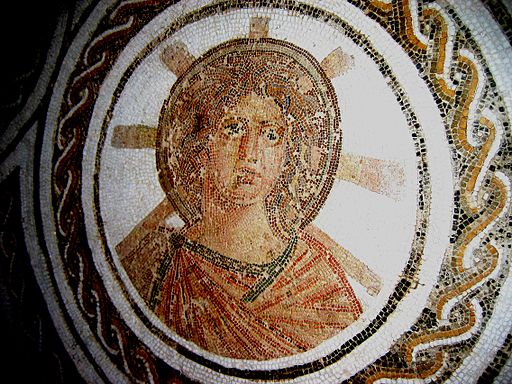The Story
Saints, angels, and other holy beings are traditionally depicted as having a circle of light over or behind their heads. This circle can have various forms, from a solid disk to a thin ring, but it is always circular and bright.
The circle, having no beginning or end, symbolizes eternity and represents the transcendence of physical existence.
Popular fiction, as well as film and television depict Christians as believing that when they die and go to Heaven they too will receive halos (and harps and wings).
Mary's halo is often depicted as a circle of twelve stars, a symbol that, along with Mary's traditional blue colour, now forms the European Union's flag.
Historical Facts
From ancient times, halos have been used to highlight the significant characters in artwork. The halo appears even in literature, such as Homer's Iliad's depiction of battle heroes having an unnatural light around their heads. Many religions, such as Hindu, Buddhist, Greek, and Egyptian, used this symbol of divinity in their paintings, sculptures, and mosaics.
During the early 4th century, the Roman Empire made a form of Christianity its official religion. Members of other religions were often converted to Roman Christianity by having their previous religion described in Christian terms, allowing them to follow their old traditions and celebrations while being nominally Christian.

Throughout the Roman Empire, one prominent pre-Christian god was Apollo, the sun god. Apollo was the favourite god of the emperor Constantine, who was largely responsible for the development of Roman Christianity. Apollo's images were very recognizable as they had a circle of flames or a bright circle of light behind his head to represent the sun.

Christ as Sol Invictus, late 3rd century, St. Peter's Basilica, Vatican
When the sun-god's followers were converted to Christianity, the depictions of Apollo were simply renamed to be depictions of Jesus, and it eventually became common practice for all depictions of Jesus to include this halo or nimbus. Later, the practice extended to depictions of Mary, the saints, angels, and other holy figures.
The Bible
The Bible does refer to God as a being of light, and to Moses's face as being literally radiant after his meeting with God on Mount Sinai, but otherwise says nothing about halos.
Even the Catholic Encyclopedia states that the Bible furnished no example for the bestowal of a halo upon individual saintly personages
.
Why
The use of non-Christian symbolism in Christian art is simply happenstance, caused by the identification of the Roman sun god Apollo with Jesus. Later Catholic leaders saw nothing wrong with this use of non-Christian symbolism and allowed its use to spread to other holy figures.